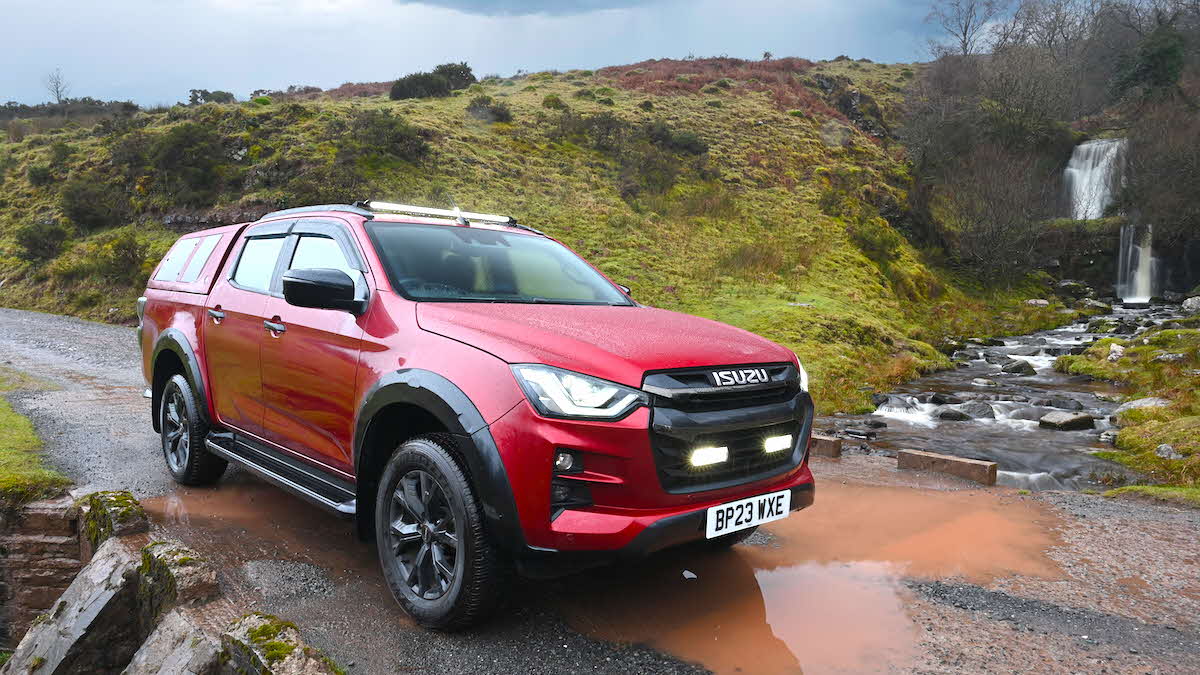New and used
Browse for bargains from thousands of new and used vehicles for sale, or sell your caravan, motorhome, towcar or accessories.
Buy and sell nowJames Batchelor gets behind the wheel of the double cab version of Isuzu’s D-Max pick-up, which is way more than just a willing workhorse

Isuzu’s D-Max put in a good showing in the Caravan and Motorhome Club’s Towcar of the Year 2024 competition, but was beaten to class honours by the hugely-impressive Ford Ranger and Volkswagen Amarok sisters. Judges felt there was much to recommend, though, so I was keen to spend some more time with Isuzu’s practical pick-up.
Built by a company whose sole focus in the UK is on the pick-up market, the choice of D-Maxes is extensive, ranging from a utility-spec single-cab, right up to one kitted out by the famous Arctic Trucks company, complete with 35in knobbly tyres and a 50mm lift kit.
Models like the V-Cross Double Cab are designed to appeal to both business owners and private buyers. While still offering many of the creature comforts and styling features that SUV buyers want, it can theoretically be used as a workhorse during the week, and to go to the shops or tow the caravan at weekends.
The D-Max benefitted from a light facelift last year – principally comprising a slightly-tweaked front grille and new alloy wheels – but it’s essentially the same model unveiled in 2020.
When it launched, the third-generation D-Max took a giant step forwards in terms of refinement, perceived quality and styling, and the last three years have done little to blunt its looks. Bright colours give a sense of fun, while our car’s assortment of optional goodies provide added presence. Inside, it’s very easy to get comfortable up front thanks to a pair of large and supportive seats (leather trimmed in the V-Cross model) and visibility is boosted by slim pillars either side of the windscreen – more adjustment in the steering column would be nice, though.
The dashboard and fixtures and fittings feel well put together, with plenty of soft-touch plastics covering the top of the fascia and doors, while the switchgear look robust.
D-Max DL40 models get a 7in touchscreen as standard and this grows to 9in in the V-Cross. It’s easy to use but the functionality is a bit basic and sat-nav doesn’t come as standard on any model. Happily Apple CarPlay and Android Auto are thrown in, and there’s a wealth of standard safety equipment. The Isuzu’s interior strikes a good balance between being comfortable and sturdy.
Space in the back is on par for the class, with decent head- and knee-room, and the rear bench is both comfortable and flexible – the squabs can fold up in a 60/40 split, and the seats can fold down allowing you to carry items such as bikes if you wish.
The pick-up area is naturally the main interest, and depending on the type of cab you choose – Single, Extended Cab or Double Cab – the bed is of different lengths. At 1,495mm, the D-Max Double Cab is at the shorter end of the spectrum and is trumped by the Toyota Hilux’s 1,525mm and the 1,564mm-long Ford Ranger for example. The D-Max’s load bay is one of the widest at 1,530mm, and comes with tie-down hoops. It also has a damped tailgate, which is a nice touch.
Our truck had a plethora of options, including a carpeted load bed and an expensive-looking colour-coded leisure canopy (load bed box); towbar and electrics come in at £552.
There’s only one engine option with the D-Max – a 1.9-litre turbodiesel, although you can choose between six-speed manual and automatic gearboxes. With just 162bhp, progress is leisurely but feels quicker than the 11.2-second 0-62mph acceleration time quoted. Fuel economy is decent, with the pick-up averaging just over 29mpg during our test (19.5mpg when towing), but the overall impression of the engine is it feels far more agricultural than the equivalent diesels from Ford, Toyota and KGM.
The engine’s guttural nature isn’t unpleasant by any means – it’s just noticeably gruffer than rivals’ motors. Our truck’s six-speed auto changed gear smoothly for the most part, although at low speeds it coud seem a little hesitant.
Naturally, when you drive any unladen pick-up, the ride can be rather bouncy, but the D-Max isn’t the worst in this regard. Body control through bends is decent, and the steering is light and fairly accurate.
With a kerbweight of 2,010kg, the Isuzu can pull large, fully-laden caravans weighing up to 1,709kg (using the Club’s 85% towing recommendation). I hooked up our test car to a caravan with an MRO of 1,618kg and the D-Max towed with huge confidence.
Strangely, the outfit didn’t put too much strain on the engine, its 360Nm of torque delivering a strong dose of punch between 40mph and 50mph, and the gearbox’s slight hesitancy felt when driving solo all but disappeared when hitched up. The driver
can switch between two-wheel drive high and four-wheel drive high ‘on the fly’, and it was the latter I chose for the majority of my test – not due to the vehicle needing the extra traction, but more for my own peace of mind.
During Towcar of the Year testing, it was noted by all the judges that the D-Max exhibited great manoeuvrability when towing, and was more than an equal to the newer Ford Ranger for holding tight lines through the bends.
Although the new Ford Ranger and Volkswagen Amarok have made decent strides with regard to comfort and technology in the pick-up class, the Isuzu D-Max is still up to the job. More rugged than its competitors, it is keenly priced, packed with safety kit and appears very dependable.